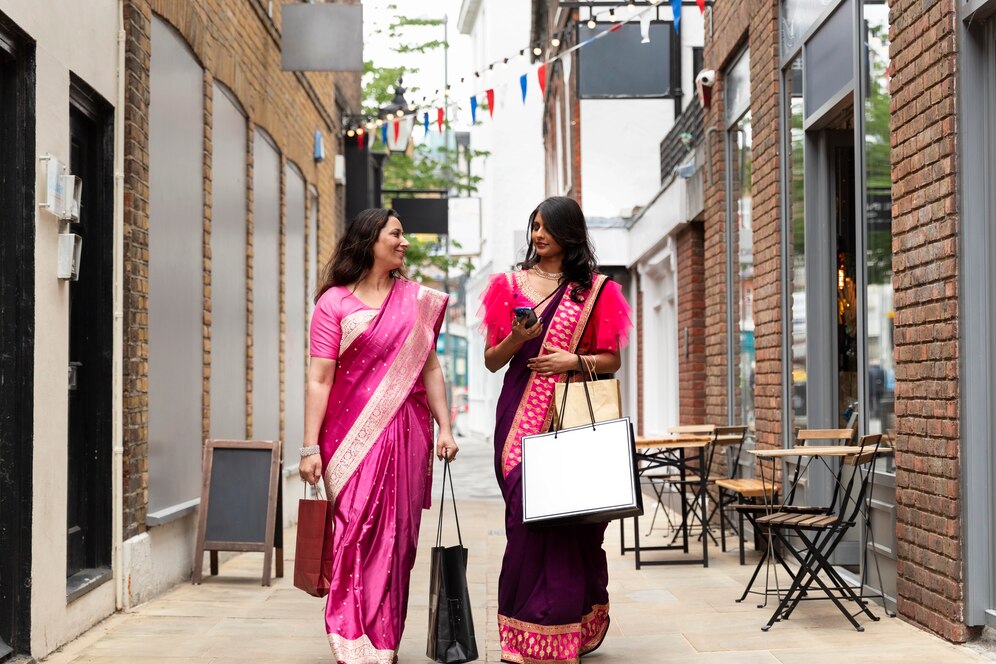Fashion is far more than just clothing; it is a reflection of culture, heritage, and individual identity. Across the globe, fashion trends are deeply rooted in cultural traditions, with various societies shaping the clothing we wear, the styles we follow, and the fashion innovations we embrace. Cultural influences have always played a significant role in shaping fashion trends, from traditional garments to modern streetwear. These influences continue to inspire designers and fashion enthusiasts alike, bridging the gap between history and modernity.
In this article, we’ll explore the powerful impact of cultural fashion influences, from iconic traditional garments to how these influences manifest in contemporary fashion and street style.
The Cultural Significance of Fashion
Fashion has always been more than mere aesthetics. For many cultures, clothing is a key component of identity, often carrying significant meaning. The colors, patterns, and materials used in clothing can symbolize social status, geographical location, historical events, or even religious beliefs. This strong connection between culture and fashion has led to the evolution of iconic garments that are widely recognized around the world.
For example, in India, the sari is more than just a garment—it’s a symbol of tradition and grace. Similarly, the Japanese kimono, the Scottish kilt, and the West African dashiki all carry deep cultural significance, and their timeless appeal continues to resonate in contemporary fashion. These garments are not only representative of their culture but also serve as a source of inspiration for global designers who blend traditional elements with modern style.
Traditional Garments: From Heritage to High Fashion
Traditional clothing from various cultures around the world has had a lasting impact on global fashion trends. While many of these garments were once worn primarily for cultural or ceremonial purposes, they have become widely recognized and have inspired modern designs.
1. The Kimono: Timeless Elegance
The kimono, originating from Japan, is one of the most iconic garments in the world. Known for its intricate patterns, wide sleeves, and elaborate designs, the kimono has transcended its traditional use as formal wear to influence modern fashion. Designers across the world have taken inspiration from its structure, incorporating kimono-like sleeves, wrap-around styles, and luxurious fabrics into contemporary collections. The kimono’s influence can be seen in fashion runway shows as well as in casual wear, like kimono-inspired robes and outerwear.
2. The Sari: A Symbol of Grace
The sari is an integral part of South Asian culture, especially in countries like India, Bangladesh, and Sri Lanka. This elegant garment consists of a long piece of cloth draped around the body and is often made from luxurious fabrics like silk or cotton. While the sari is worn on special occasions, it has influenced global fashion trends, particularly in the fusion of traditional and modern designs. The draping technique and vibrant textiles used in saris have inspired designers worldwide, and the sari has appeared in both haute couture collections and ready-to-wear fashion lines.
3. The Dashiki: A Bold Statement
The dashiki is a brightly colored garment with origins in West Africa. Traditionally worn by men, it is a loose-fitting shirt with elaborate patterns and vibrant colors. In recent years, the dashiki has gained popularity beyond Africa, becoming a symbol of cultural pride and empowerment. Its bold designs and rich patterns have influenced global streetwear and fashion trends. Designers worldwide now incorporate African prints and motifs into their collections, blending them with modern cuts and styles to create culturally rich, fashion-forward pieces.
Modern Street Style: Where Culture Meets Trend
Street style is an ever-evolving fashion genre that borrows heavily from cultural influences. The fusion of traditional elements with contemporary fashion creates dynamic, innovative looks that speak to both heritage and modernity. Cultural fashion is often embedded within urban fashion, offering a unique and accessible way to celebrate cultural diversity.
1. The Hip-Hop Revolution
Hip-hop culture, which emerged from African-American communities in the United States in the 1970s, has had a profound impact on global fashion. Baggy jeans, oversized jackets, and bold accessories became staples of the hip-hop look, influenced by African-American cultural expression. Today, hip-hop continues to shape the fashion industry, with streetwear brands like Supreme, Off-White, and Yeezy drawing from this cultural movement. The hip-hop influence is evident in the blend of luxury and casual wear, resulting in a look that combines comfort with high fashion.
2. African Prints in Global Fashion
African fashion has gained significant traction in recent years, with traditional textiles like kente cloth, wax prints, and mud cloth becoming central to global fashion conversations. These fabrics, rich with cultural history and symbolism, have been embraced by designers from Africa and beyond. The vibrant colors and geometric patterns of African prints have appeared on runways and in everyday fashion, with designers like Stella Jean and Duro Olowu leading the way in incorporating these elements into global collections. The African fashion movement is not just about aesthetics; it’s a celebration of cultural pride and heritage.
3. Asian Fashion Influences
Asian fashion has also made significant strides in influencing global trends. Japanese street style, particularly in cities like Tokyo, has been a source of innovation and creativity. Designers like Rei Kawakubo and Issey Miyake have pushed the boundaries of fashion, incorporating traditional Japanese elements like kimono silhouettes and origami-inspired designs into their collections. Similarly, the rise of K-pop culture has played a crucial role in introducing Korean fashion to the global stage. The blending of traditional Asian textiles, such as silk and brocade, with modern styles has contributed to the growing popularity of Asian-inspired fashion worldwide.
Conclusion
Cultural fashion influences are an integral part of the global fashion landscape. From the kimono to the sari, from hip-hop streetwear to African prints, traditional and cultural garments continue to inspire modern fashion. As fashion evolves, cultural influences serve as a reminder of the rich history and heritage that shape the clothes we wear.
As we move toward a more interconnected world, cultural exchanges will continue to shape the future of fashion. Fashion will remain a reflection of the diverse and dynamic identities of people around the globe, highlighting the ongoing importance of cultural expression and inclusivity in the industry.







